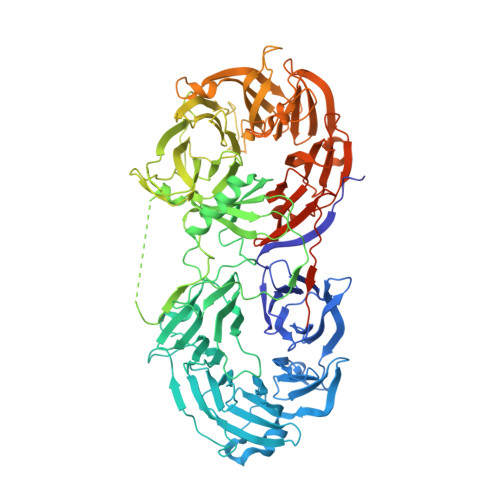Structural insights into the aPKC regulatory switch mechanism of the human cell polarity protein lethal giant larvae 2.
Almagor, L., Ufimtsev, I.S., Ayer, A., Li, J., Weis, W.I.(2019) Proc Natl Acad Sci U S A 116: 10804-10812
- PubMed: 31088962
- DOI: https://doi.org/10.1073/pnas.1821514116
- Primary Citation of Related Structures:
6N8P, 6N8Q, 6N8R, 6N8S - PubMed Abstract:
Metazoan cell polarity is controlled by a set of highly conserved proteins. Lethal giant larvae (Lgl) functions in apical-basal polarity through phosphorylation-dependent interactions with several other proteins as well as the plasma membrane. Phosphorylation of Lgl by atypical protein kinase C (aPKC), a component of the partitioning-defective (Par) complex in epithelial cells, excludes Lgl from the apical membrane, a crucial step in the establishment of epithelial cell polarity. We present the crystal structures of human Lgl2 in both its unphosphorylated and aPKC-phosphorylated states. Lgl2 adopts a double β-propeller structure that is unchanged by aPKC phosphorylation of an unstructured loop in its second β-propeller, ruling out models of phosphorylation-dependent conformational change. We demonstrate that phosphorylation controls the direct binding of purified Lgl2 to negative phospholipids in vitro. We also show that a coil-helix transition of this region that is promoted by phosphatidylinositol 4,5-bisphosphate (PIP 2 ) is also phosphorylation-dependent, implying a highly effective phosphorylative switch for membrane association.
Organizational Affiliation:
Department of Structural Biology, Stanford University School of Medicine, Stanford, CA 94305.















